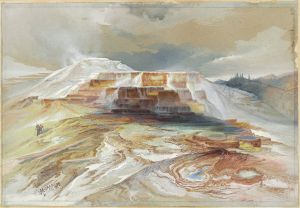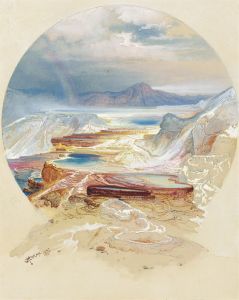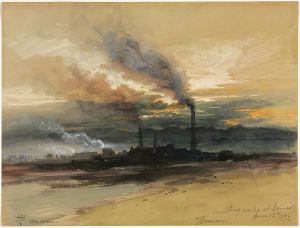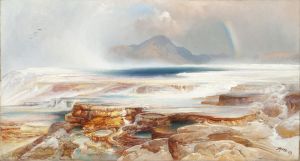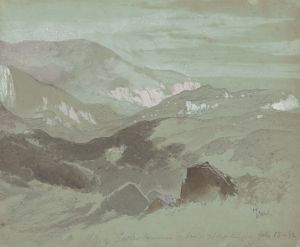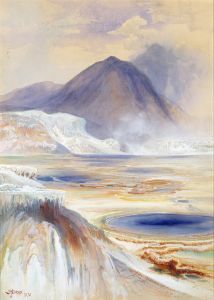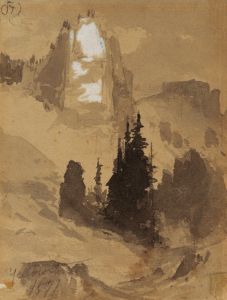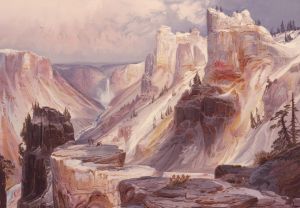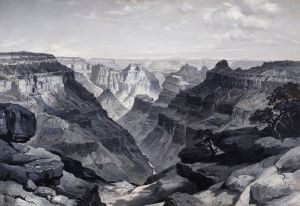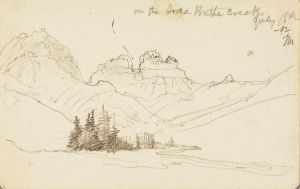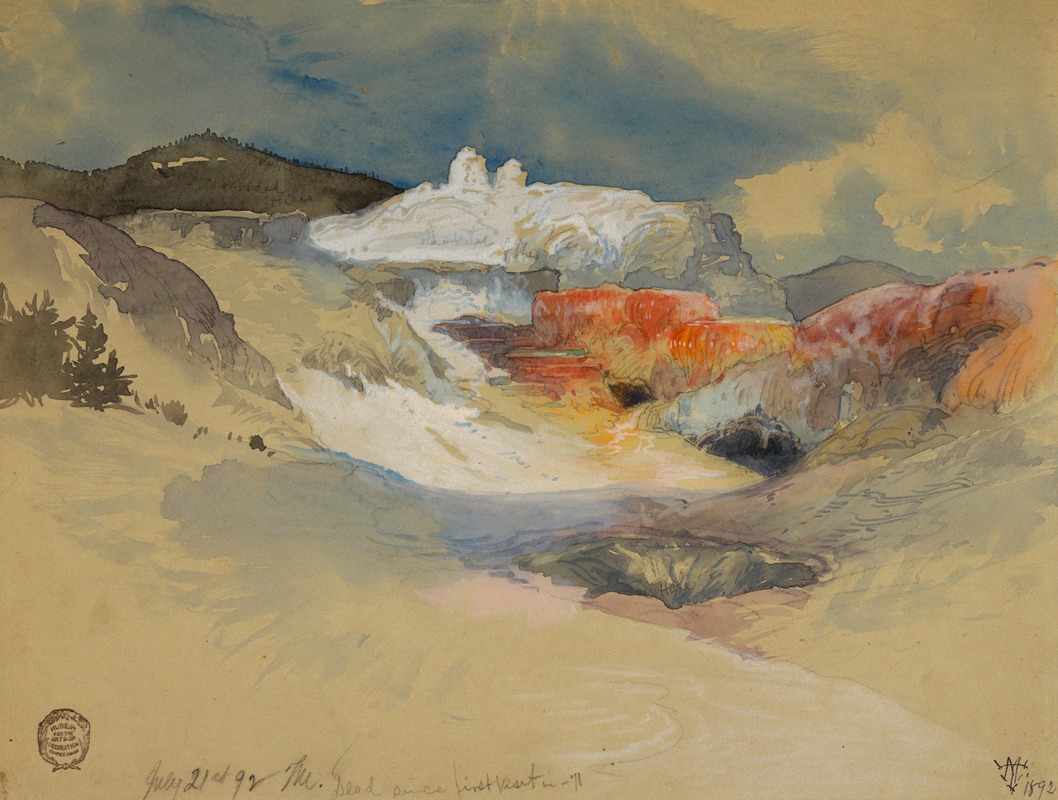
Yellowstone, Hot Springs
A hand-painted replica of Thomas Moran’s masterpiece Yellowstone, Hot Springs, meticulously crafted by professional artists to capture the true essence of the original. Each piece is created with museum-quality canvas and rare mineral pigments, carefully painted by experienced artists with delicate brushstrokes and rich, layered colors to perfectly recreate the texture of the original artwork. Unlike machine-printed reproductions, this hand-painted version brings the painting to life, infused with the artist’s emotions and skill in every stroke. Whether for personal collection or home decoration, it instantly elevates the artistic atmosphere of any space.
"Yellowstone, Hot Springs" is a painting created by the American artist Thomas Moran, renowned for his significant contributions to the Hudson River School and his role in popularizing the American West through art. Completed in 1872, this work is one of Moran's many depictions of the Yellowstone region, an area that profoundly influenced his career and the broader perception of the American landscape.
Thomas Moran first visited Yellowstone in 1871 as part of the Hayden Geological Survey, a government-sponsored expedition led by Ferdinand V. Hayden. Moran was invited to join the expedition as its official artist, and his sketches and watercolors from this journey played a pivotal role in shaping public and political support for the establishment of Yellowstone as the first national park in the United States in 1872. His vivid and dramatic portrayals of Yellowstone's unique geothermal features, including hot springs, geysers, and other natural wonders, captured the imagination of viewers and emphasized the region's extraordinary beauty.
"Yellowstone, Hot Springs" exemplifies Moran's ability to combine scientific observation with artistic interpretation. The painting showcases the vibrant colors and dynamic forms of the hot springs, a hallmark of Yellowstone's geothermal activity. Moran's use of light, color, and composition reflects his deep admiration for the natural world and his skill in conveying its grandeur. His works often emphasized the sublime qualities of the landscape, inspiring awe and reverence in viewers.
Moran's paintings, including "Yellowstone, Hot Springs," were instrumental in promoting the idea of preserving America's natural wonders. His art, along with the photographs of William Henry Jackson, provided visual evidence of Yellowstone's unique features, influencing Congress's decision to designate the area as a national park. This marked a significant moment in the history of conservation and the appreciation of natural landscapes in the United States.
Today, "Yellowstone, Hot Springs" is recognized as an important example of Moran's artistic legacy and his role in the early conservation movement. The painting is part of a broader body of work that continues to be celebrated for its historical and cultural significance. Moran's depictions of Yellowstone remain iconic representations of the American West and its natural beauty.





